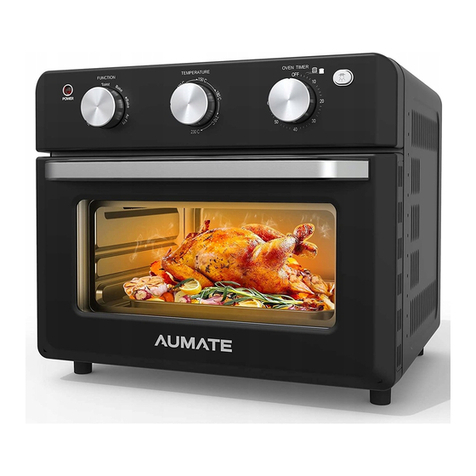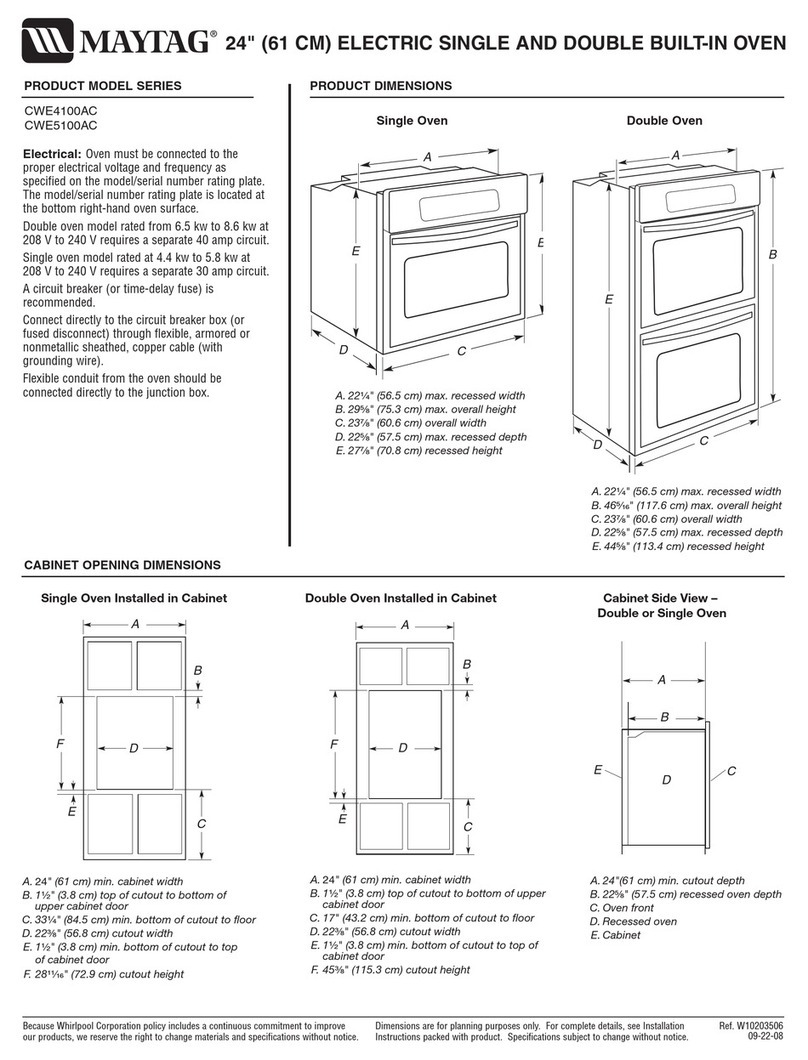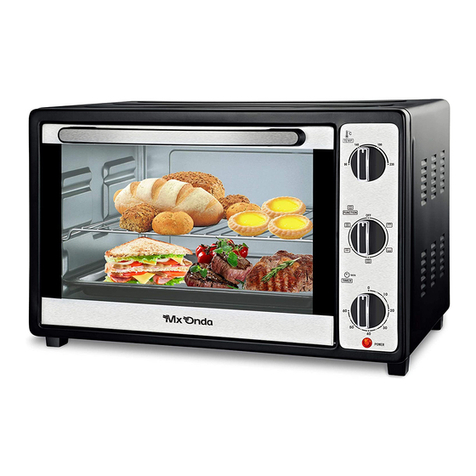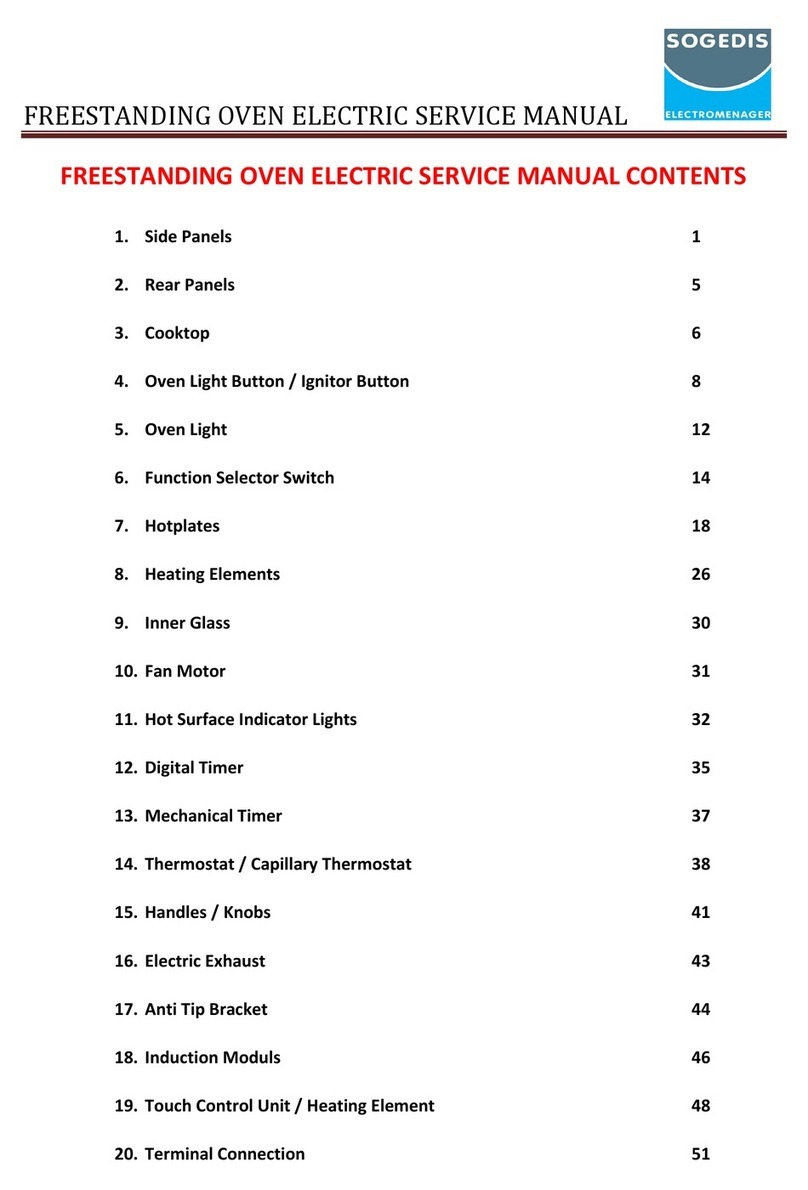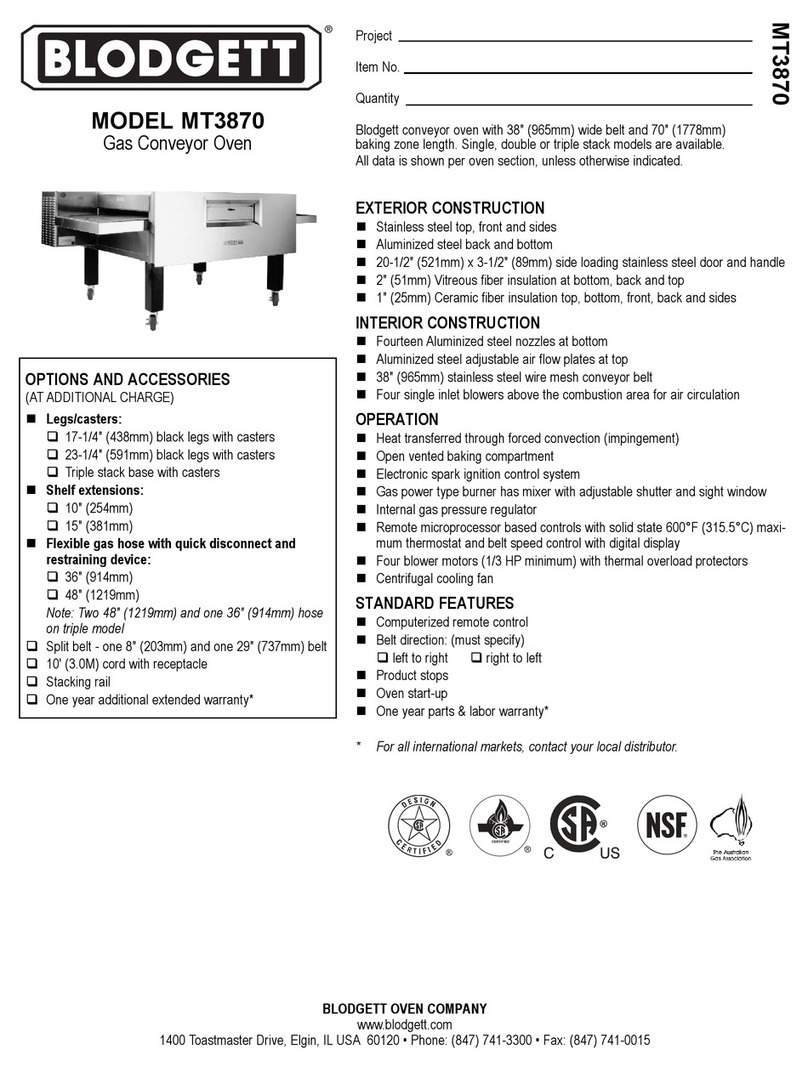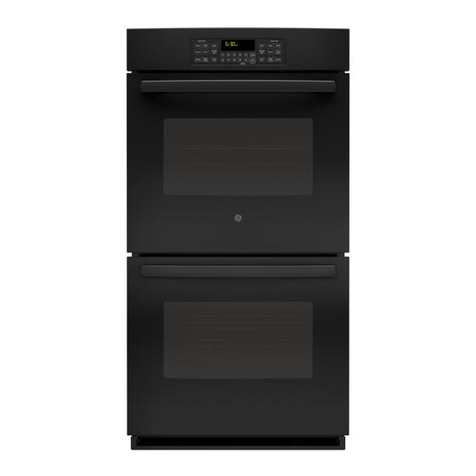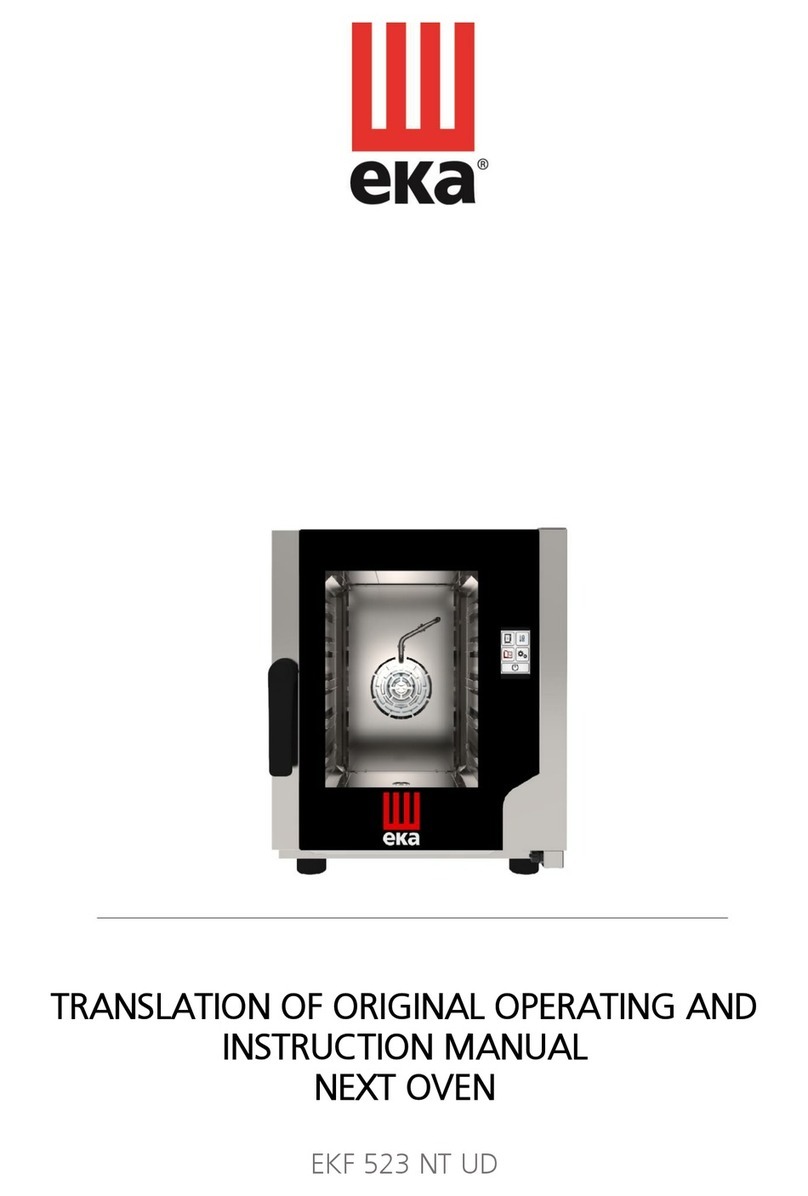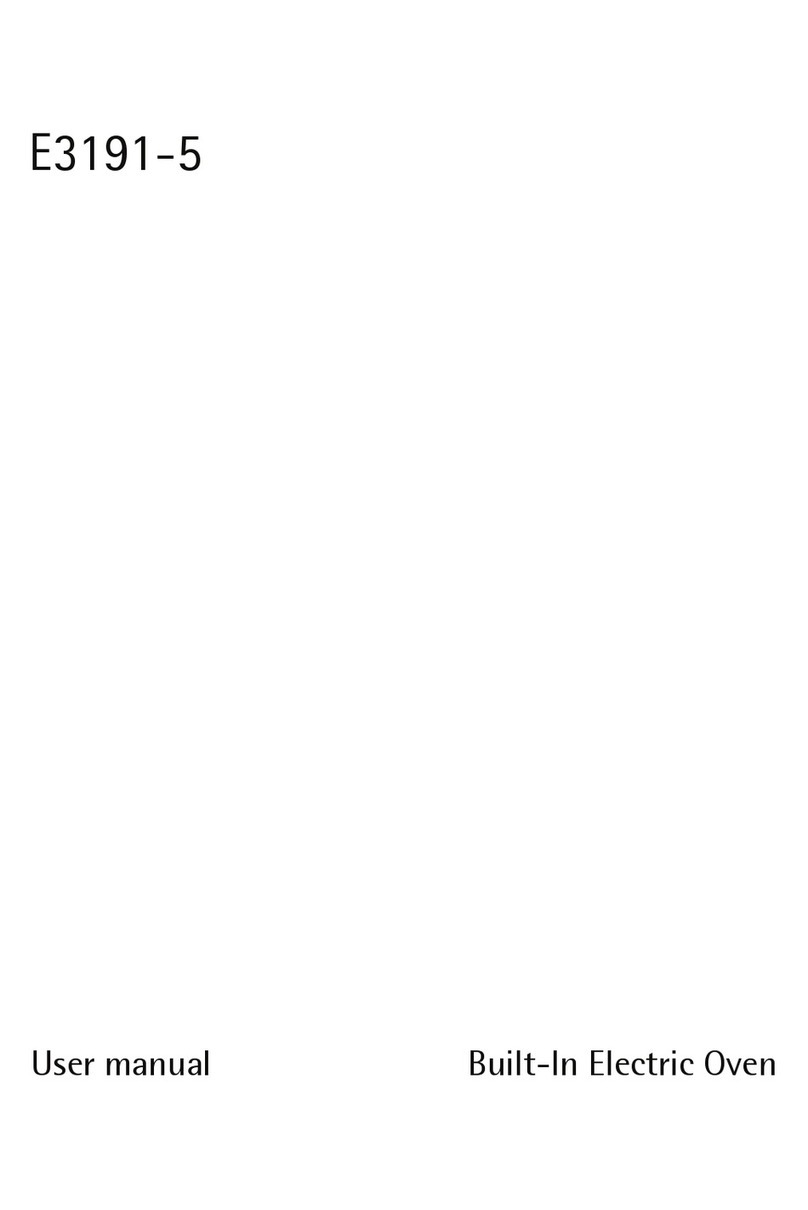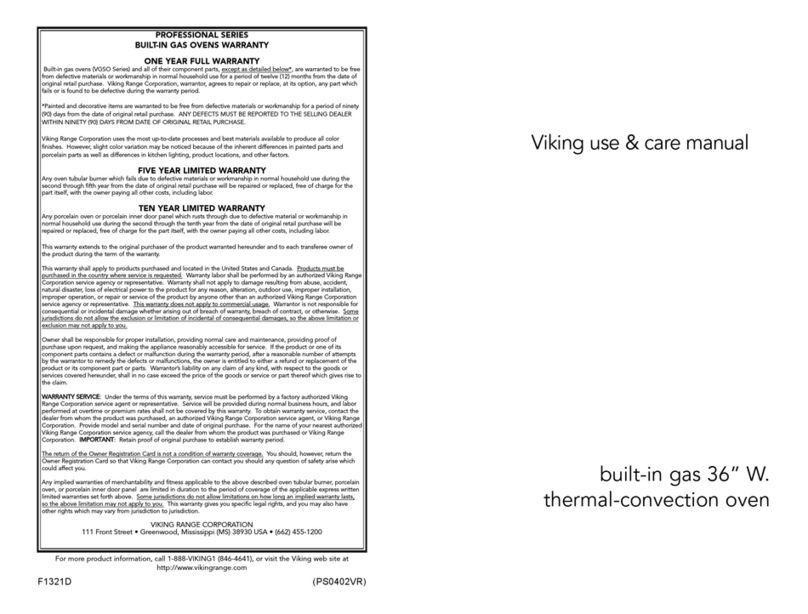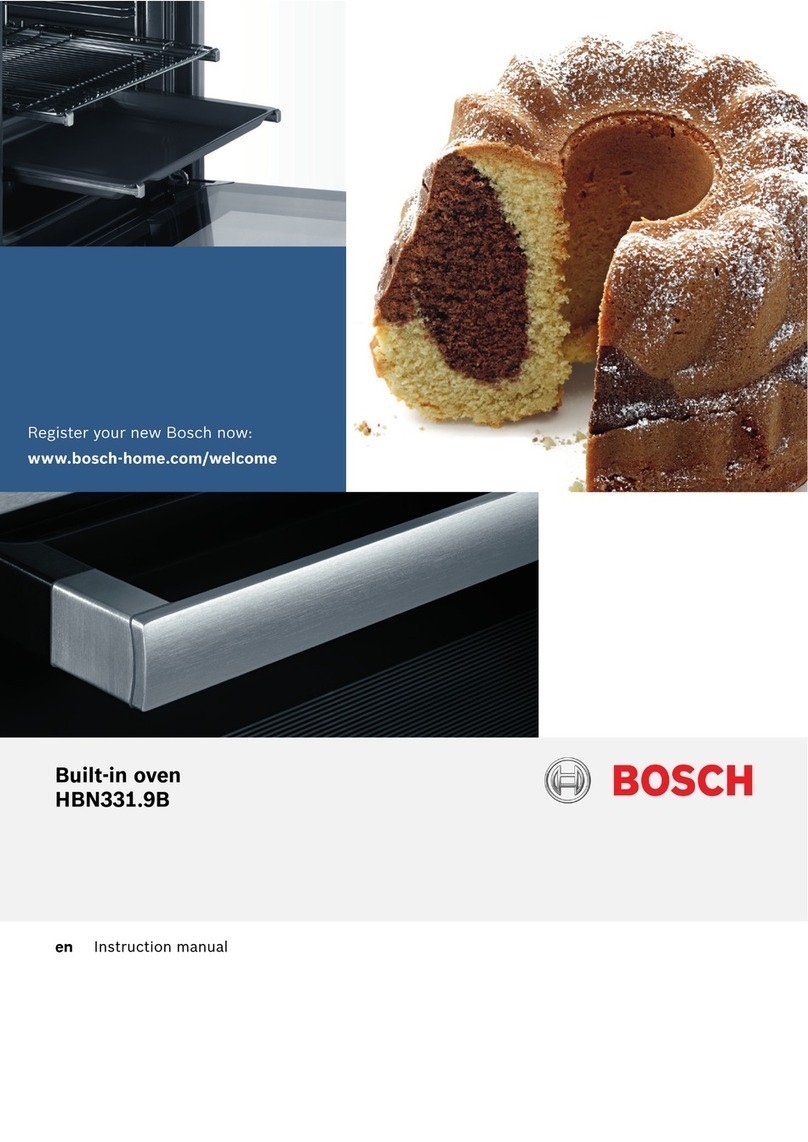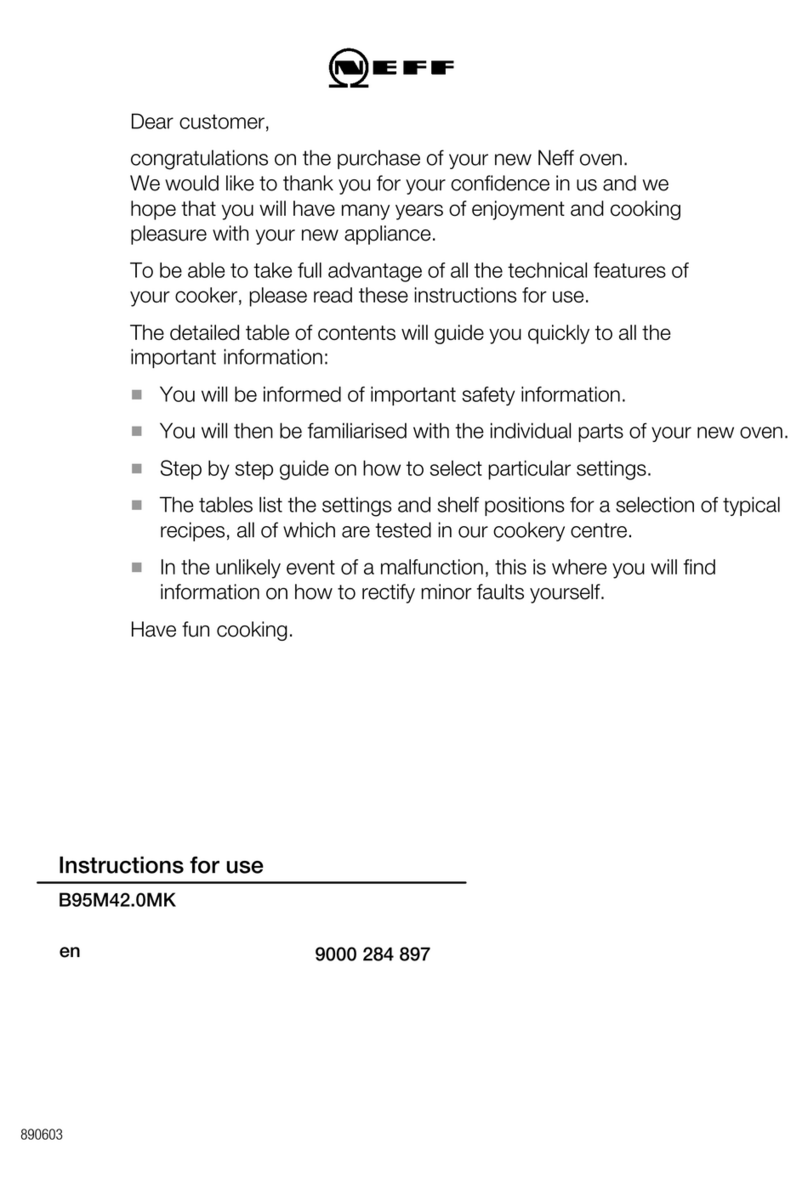
3
SET UP
Setting up and installation of your Digital Road Chef oven is simple.
1. Your oven comes with a set of ‘tie down’ clamps that can be used to se-
curely attach it in your vehicle or the like. There are slots at the top and
bottom of the oven allowing you to secure it to a shelf or roof of your vehi-
cle. Simply insert the two prongs into the slots in the side of the oven and
screw the brackets down. Periodically check the attachment to ensure it
has not become loose.
2. The baking racks can slide in and out of the oven making it easier for you to reach your food.
Be aware that the baking racks get very hot and appropriate hand protection should be used
when handling them. The trays do not have a stopper on them, however they should ONLY be
extended so that 1/3rd of the rack is out of the oven. If you extend it further than this the tray may
buckle and/or fall out causing injury.
3. If the oven is ‘rattling’ when you are driving, when the oven and racks are
cool, you can gently pinch down the arms on the sides of the racks so that
they hold tightly onto the arms inside the oven.
4. The Digital Road Chef Oven requires some level of ventilation around the
front half of the oven due to the heat susceptibility of the LCD Screen and
controls. The oven can be recessed but it the front of the oven must have good ventilation at all
tiems when ON
5. The oven is insulated on 5 sides using fibreglass insulation. This should keep the outside tem-
perature below 40°C although this can vary depending on the ambient temperature. The door
is insulated through a double wall which only allows convection to heat it up.
COOKING
To turn your oven on either turn the power supply on or long press the Power button, that will iniate the
Standby and then Cooking mode for 20 minutes at 180oC. Most modern recipes and instructions pro-
vide cooking time for a fan forced oven. As the Digital Road Chef is not fan forced it will take longer to
create similar results. To achieve the best results, we suggest you preheat the oven for 20-30 minutes,
especially if you are cooking with fresh ingredients. To give you a rough idea it will take you about 30
minutes preheating for the oven to get to 150 degrees. The Digital Road Chef oven’s heat source is on
the bottom of the inside of the oven and heat is transferred throughout the oven through conduction
of the metal and convection in the air.
During cooking at high temperatures, it is natural for the bottom of the oven to ‘bow’ up. Your oven’s
heating element is attached directly to the base of the oven and with a high amount of heat required
the base metal naturally expands. As the four corners of the base are turned at 90 degrees the expan-
sion is restricted focusing the expansion, with the height of the racks designed to take into account the
bowing. Over time the metal will temper and harden reducing the bowing effect. Like all ovens there
are hot and cool spots, so we recommend moving the items being cooked around during the cook for
optimal results. Tips include: Place a silicone baking mat (approximately 170 x 170mm) in the centre of
the oven base. Or place the top rack (or similar rack) on top of the bottom rack to help the heat circulate
around the oven more evenly.
We recommend that you do not over fill the oven, which reduces air flow and to rotate your food be-
tween shelves and on the shelves through out the cook to avoid hot spots. Food in baking trays and
alfoil or similar coverings can be placed directly onto the bottom of the oven however you should check
it regularly as it is easy to burn food using this method. If you are reheating or cooking frozen food we
suggest that you rotate your food between shelves and on the shelves throughout the cook to avoid
the outside burning before the middle is defrosted.

